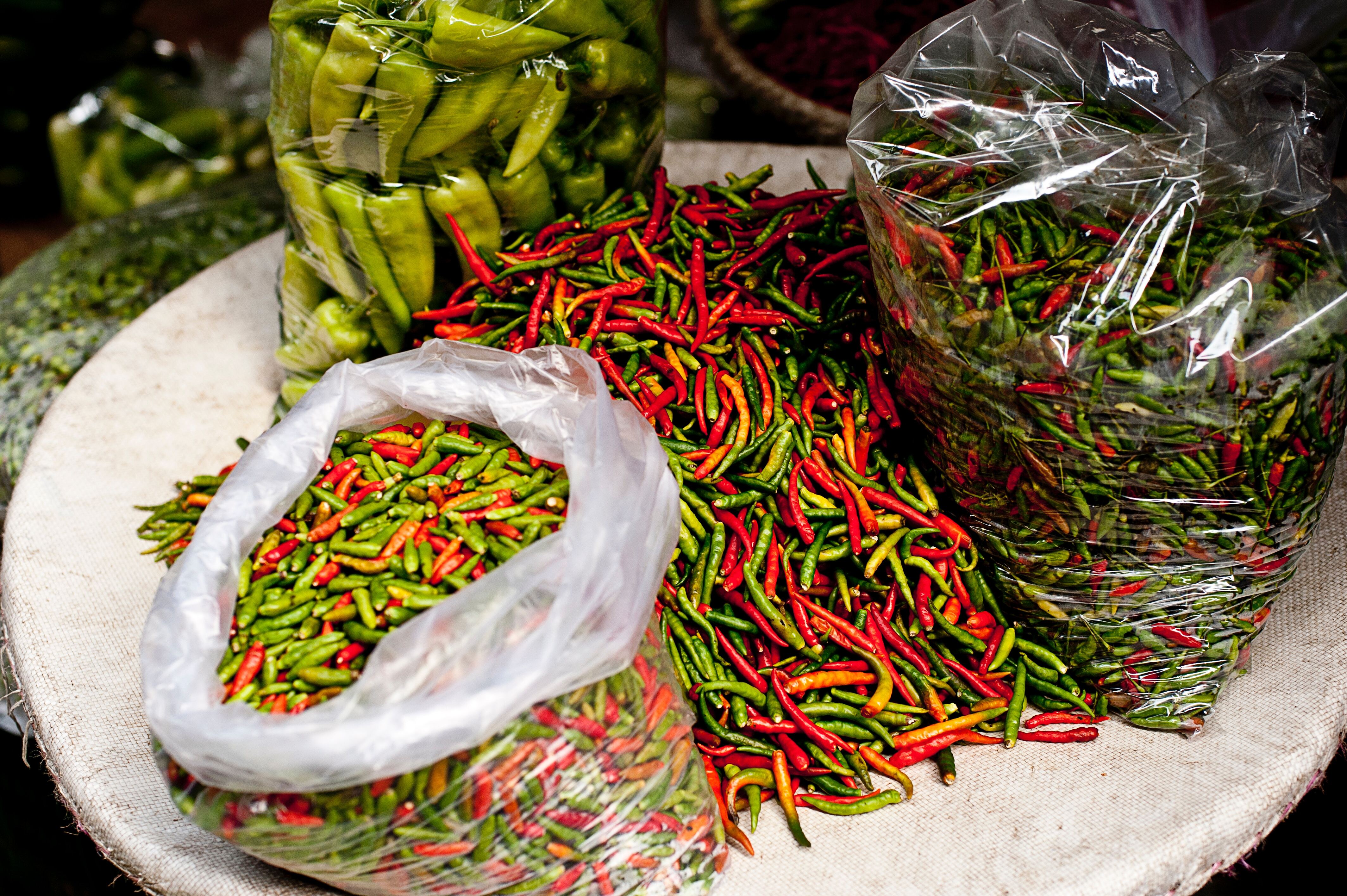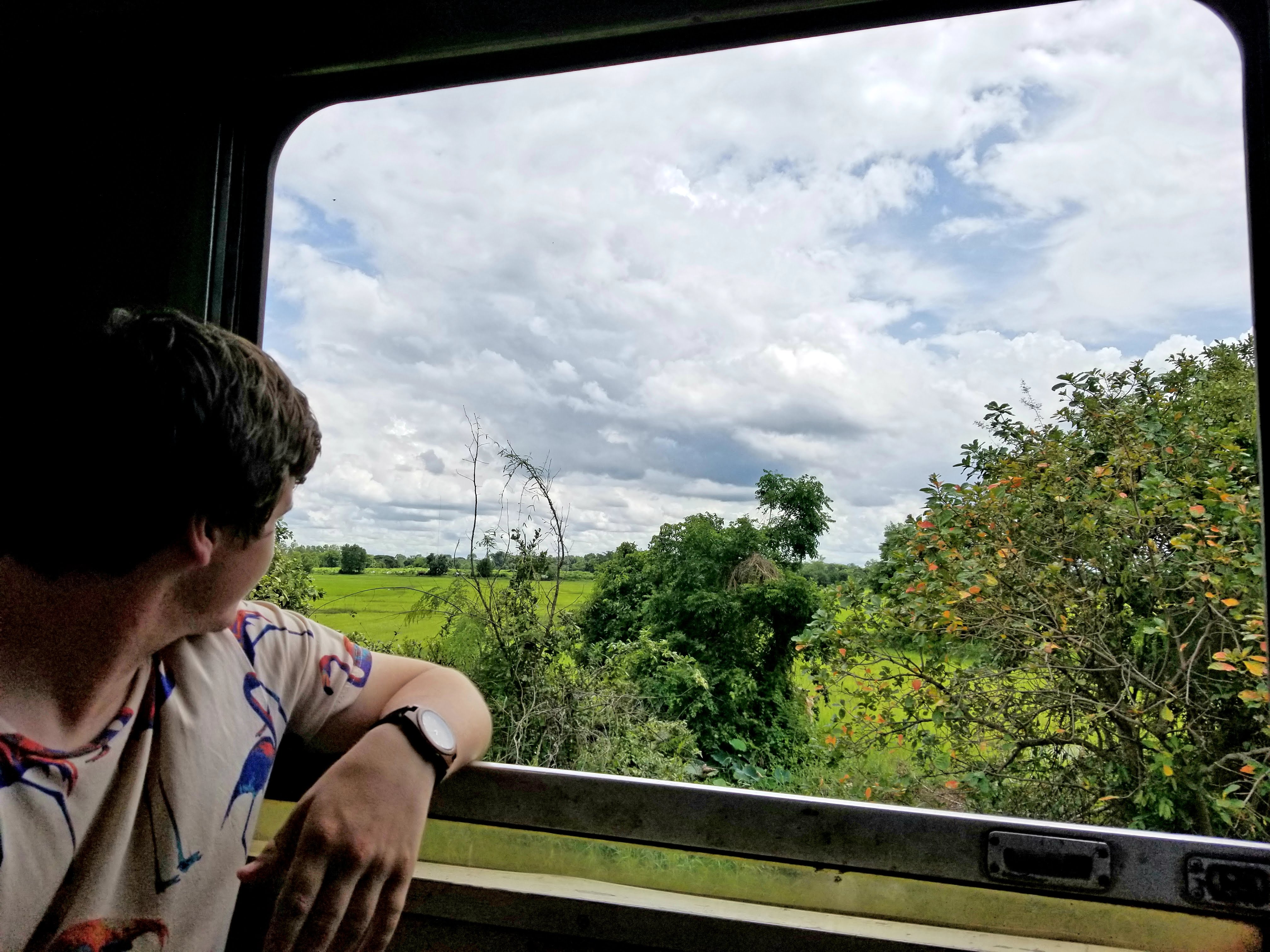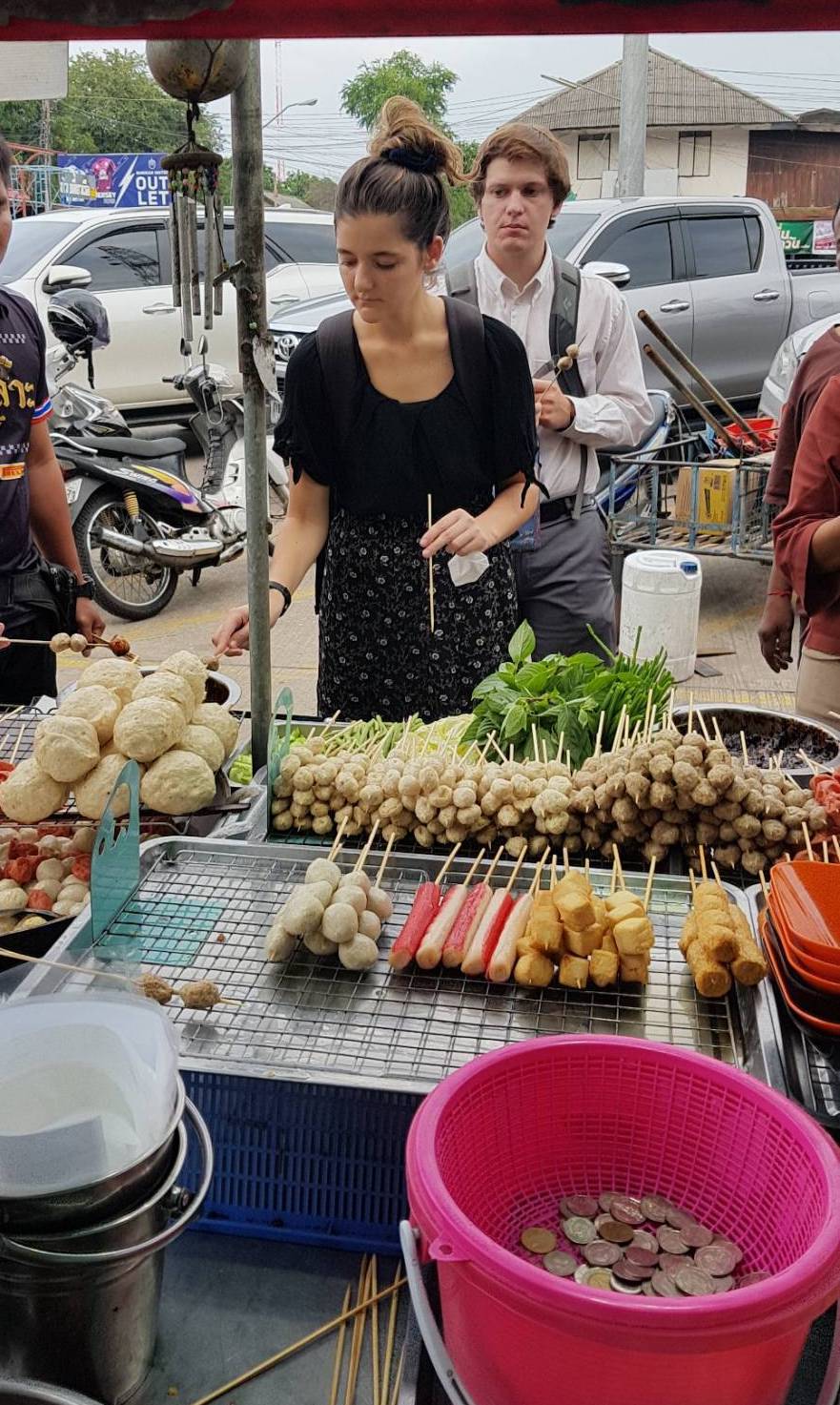Isaan food, from Thailand's most underrated region, is a huge reason why myself and other TravelBud teachers have fallen in love with the area. When first arriving to teach English in Thailand, I had the perception that Isaan was ‘just’ rice paddies and agriculture. I was so wrong! Isaan is home to some of the warmest and kindest people I have ever met with fascinating legends and culture. I highly encourage everyone to visit this region or at least try some of the delicious food it has to offer.
 Issan food is a major part of why our teachers love their Isaan placements - but the
culture and travel opportunities of Isaan soon become much-loved big factors too.
Issan food is a major part of why our teachers love their Isaan placements - but the
culture and travel opportunities of Isaan soon become much-loved big factors too.
Background of Isaan (or E-san, or Isan, or Issan)
The Isaan region (also written as Isan or E-San), located in northeastern Thailand, is the country’s largest region. It is located on the Khorat Plateau and borders Laos in the northeast and Cambodia in the southeast. Thus, it's no surprise that Isaan is heavily influenced by Laos cuisine and Khmer cuisine from Cambodia. While Isaan lacks the tourism that thrives in northern, central, and southern Thailand, it is a beautiful region brimming with delicious food and rich culture, and the bonus of escaping the tourist crowds if that's your cup of tea.
Isaan Food: Spicy, rich, and full of interesting proteins
Isaan food tends to be hot and flavorful - a result of many herbs and seasonings paired with spicy Thai chilies. Like any other region, Isaan has its fair share of interesting food such as frogs, silkworms, and crickets but it also has many delicious dishes that you can find both within the region itself and also in other parts of the country, like Bangkok, Chiang Mai, Phuket, where Isaan restaurants and market stands can be found all over.
 These chilis are a staple in most Thai food, but especially in the Isaan region.
These chilis are a staple in most Thai food, but especially in the Isaan region.
Here are some staple ingredients found in Isaan food:
- Chili peppers
- Lime
- Peanuts
- Dried shrimp
- Sticky rice
- Cilantro (YUM; that is if you’re lucky enough to have the cilantro loving gene)
 Travel opportunities all over the Isaan region are endless when teaching in Thailand, as well as to nearby Laos and Cambodia.
Travel opportunities all over the Isaan region are endless when teaching in Thailand, as well as to nearby Laos and Cambodia.
Main Dishes: Order a few of these to share around the table
Grilled Pork Salad (Nam Tok Moo)
Another favorite among Isaan food is this grilled pork salad served with a tangy, spicy sauce. The sauce is made from ground dried chilies, lime juice, mint leaves, fish sauce, and fresh green onions. This dish is similar to laab, but differs in the preparation of the meat. While laab features minced meat, nam tak moo usually contains fried or grilled meat.
Insider Tip: Moo means pork in Thai, which you'll find yourself ordering a lot of as beef is almost non-existent in Thailand.

Thai Hot Pot (Jim Jum)
This dish is the Thai interpretation of the famous Chinese hot pot. It consists of Thai infused broth (shallot, lemongrass, chili, garlic, and sweet basil) served with meat, veggies, and noodles. The dish is accompanied by small soup bowls containing hot, tangy sauce (nam jim).
Papaya Salad (Som Tam)
For good reason, som tam is one of the most popular Isaan dishes, and can be found all over Thailand. Thais love eating it for breakfast, lunch, dinner, or even as a snack. It features green, unripe papaya, lime, palm sugar, fish sauce, peanuts, and chilies mixed together in a clay mortar and pestle which can pack quite the punch. This dish perfectly mixes sweet (palm sugar), salty (fish sauce), spicy (chilies), and tangy (lime juice) together. If you love spice, add a few extra peppers! Be careful though, because som tam can get real spicy real fast.

Grilled Chicken (Gai Yang)
A simple yet delicious dish in Isaan. The chicken is often made on a small charcoal grill and can be found practically anywhere in the northeast. It is often marinated in a simple mix of sugar and lime juice to give it the unique flavour which will have you coming back for more!
Insider Tip: Gai means chicken in Thai.
Spicy Salad (Laab)
Laab (also seen spelled larb or lob) is a spicy salad and can either be served with cooked meat, uncooked meat, or mushrooms as a vegetarian option. The dish tends to be quite spicy and pairs nicely with mint leaves, chili, lime, and fish sauce mixed in. It's a great alternative to Som Tam (Papaya Salad) and I'd definitely suggest trying out both.
Side and Snacks: Because no Thai meal is complete without rice!
Sticky Rice (Khao Neow)
In Isaan, sticky rice is largely preferred over jasmine rice. Sticky rice is served in a small plastic bag in one large sticky clump. Locals pull off a chunk of sticky rice and form it into what I like to call a ‘sticky rice taco’. Then, they’ll use the rice to pick up some noodles or a piece of meat (the inside of the taco) and dip it in a sauce. Sticky rice is very much finger food and is commonly seen among local markets, but you can also order it as a side to any meal.
 Street food is one of the many delights of life in Thailand. You can always find a quick and cheap bite to eat on every corner!
Street food is one of the many delights of life in Thailand. You can always find a quick and cheap bite to eat on every corner!
Luk Chin Yewn Gin (Meatball Stands)
This standard snack consists of grilled or fried meatballs (usually pork) combined with herbs, seasonings, and a delicious spicy dipping sauce. The meatballs are served on a bamboo skewer and are a favorite among street vendors. The train station in Buriram is famous for its meatballs as the vendors have won many awards over the years.
Thai sweets aren't only for dessert, they're for whenever you may crave them!
Thai Coconut Pancakes (Ka Nom Krog)
Although it does not originate in the Isaan region, ka nom krok (famous Thai coconut pancake) is one of my favorite desserts and can be found in markets throughout Thailand. Ka nom krok is a little crispy on the outside and contains warm, gooey heaven on the inside. Vendors often add green onions, corn, or taro inside. This dessert is definitely a must-have in Thailand.

The dishes I've listed in this post are only just a few of the amazing dishes which originate from what's become my new home in Thailand. Whether you're already in Thailand or are heading over soon, I couldn't suggest trying out Isaan food while you're in this magnificent country more. And with Loas and Cambodia just a quick bus or train ride away, and the region itself boasting some of the best culture and scenery, and most friendly local people, I would definitely recommend visiting Isaan during your adventures teaching in Thailand or traveling through the country. I've made it my home and have loved every second of it.



